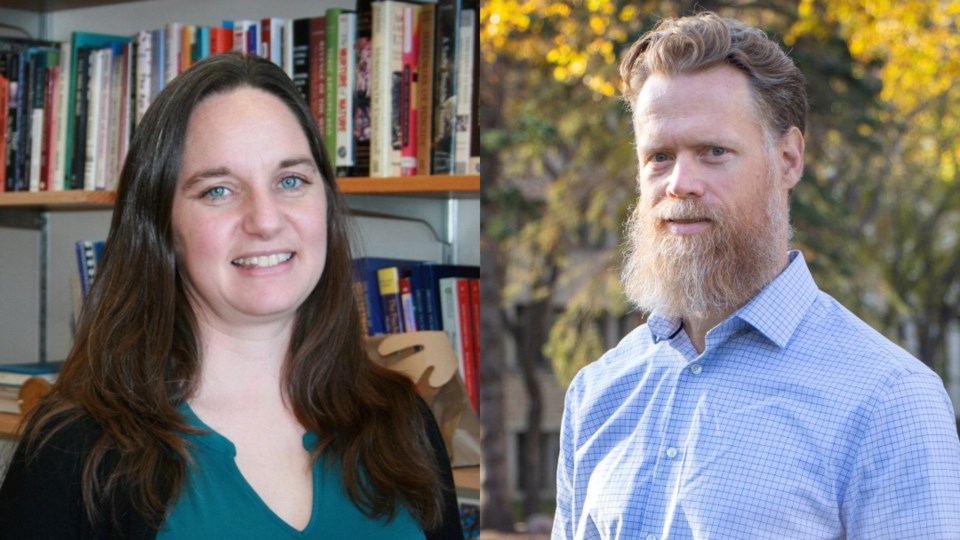SASKATOON – Sunday marked the third anniversary of the arrival in Saskatchewan of COVID-19 — an unwelcome and ever-evolving visitor that has since claimed at least 1,890 lives in the province and shows little sign of imminent departure.
The Remember Rebuild Saskatchewan team at the University of Saskatchewan (USask) is working to help the province remember the lives lost and to memorialize the people behind the statistics. The team’s Remember Lives Not Numbers project is creating a digital memorial to remember the individuals whose lives were taken by COVID-19.
While media reports initially followed the deaths closely, people across Saskatchewan became disconnected from the stories of those who died as the scale of the pandemic increased, said Dr. Jim Clifford (PhD), team member and associate professor of history at USask’s College of Arts and Science.
“I remember some of the powerful stories reported in the news during the early months of the pandemic that helped connect the death count with lives lost,” Clifford said.
“We collectively mourned Alice Grove and Fred Sasakamoose. But as the numbers grew, we probably needed to avoid thinking of the scale of the loss to avoid being overwhelmed.”
Individual tragedies were converted into statistics and graphs reported daily for almost two years on the government dashboard, newspaper covers, and radio and television news. While the daily reporting of COVID-19 deaths ended on Feb. 6, 2022, the tragedies continued with more than 800 deaths occurring since then, he said.
The project team of Clifford, Dr. Patrick Chassé (PhD), Dr. Erika Dyck (PhD), graduate student Bethany Knowles, and undergraduate research assistant Domenica Medina Sanchez combed news stories and obituaries for individuals whose death was linked to COVID-19. The website identifies more than 80 individuals whose families listed COVID-19 as the cause of death.
“For each person, we have included a brief highlight about their life as reported in the obituaries by family members and friends,” said Clifford. “We include the link to the original obituary, or in rare cases, a news article where you can find out more about the people across Saskatchewan who we have lost during the pandemic.”
Chasse said it was tough work and often very sad. “But we tried to focus on the wide diversity of people we lost and think about what they contributed to this province and the impact they left in Saskatchewan, large or small.”
The team hopes the community will help identify people missing from the memorial. The Remember Lives Not Numbers website includes the option to submit details about friends and family who died from COVID-19.
“I am one of many Saskatchewan residents who lost friends during COVID-19 and could not attend a memorial service or grieve with friends to honour their passing,” said Dyck. “I hope this site also helps us collectively grieve the losses of our friends and family as we look back at three years of pandemic conditions.”
Remember Rebuild Saskatchewan is a unique initiative in Canada based on its multidisciplinary scope and scale. Dyck, who is on the Royal Society of Canada (RSC) Humanities Taskforce, said RSC sees the USask project as a model for humanities scholars conducting research in this area.
With two federal grants totalling nearly $600,000 awarded to explore the wider impacts of COVID-19 and build an archive of data and stories about Saskatchewan’s pandemic experience, researchers have an opportunity to develop a comprehensive and inclusive picture by involving community agencies and the public and scouring social media and more traditional sources of related information.
Dyck and Clifford credit USask’s national leadership in interdisciplinary collaborative research as key to the success of the project, which has had historians work with the community health experts and epidemiologists in the College of Medicine. Another strength, they note, is the longstanding connections these USask researchers have had with community partners.
“That interdisciplinary co-operation is what enabled us to quickly respond with this project because this happened over the course of really a few months. It was quite a feat,” said Dyck.
— submitted by USask Media Relations




